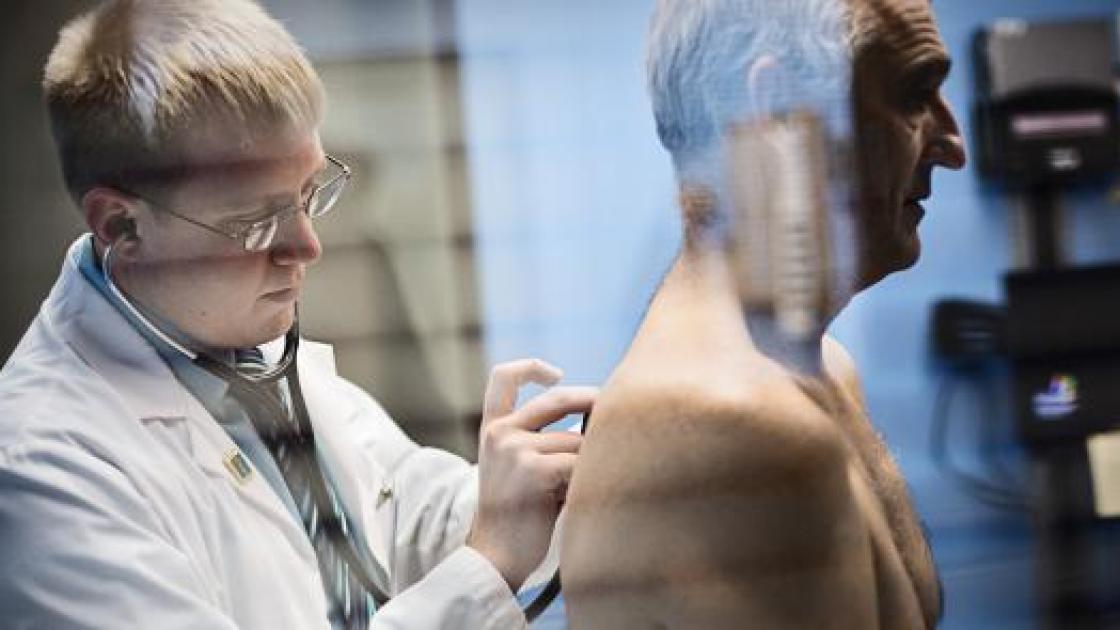
About
Standardized Patients (SPs) have been used for teaching and assessing medical students at Southern Illinois University (SIU) School of Medicine since the late 1970's. In the mid-1980's, under the direction of Dr. Howard Barrows, the use of SPs in assessment was expanded to include a 15 patient clinical practice exam (CPX) in the senior year. This examination served as part of the stimulus for the development of the SP Project at the National Board of Medical Examiners and for the Macy consortia Project in the early-mid 1990's.
Students at SIU School of Medicine see SPs throughout their undergraduate curriculum.
- In the first year, students see SPs to learn basic history and physical exam skills.
- In the second year, history and physical exam skills are reviewed (using SPs) and teaching or practice SP cases are used throughout the year for skill development. In addition, students begin to be assessed with SPs.
- In the Problem-Based Learning Curriculum which spans the first two years as an alternative curricular track, students see approximately 20-25% of their patient cases as SPs, and all examinations are SP-based.
- In the junior (clerkship) year, students work up from 1 to 5 SP cases as part of the end of clerkship assessment in all but one of the six clinical clerkships. A Medical Humanities course on Doctor/Patient Communication uses an SP experience for teaching/formative assessment in the third year.
- In the senior year, a 15-patient CPX is administered to determine readiness for residency education. Each SP encounter is followed by a computer-based clinical reasoning exam.
The Departments of Family and Community Medicine, Internal Medicine, Pediatrics, and Psychiatry use SPs to assess the clinical skills of their residents as well as their students.
By the time our SIUSOM students graduate, they will have seen more than 50 SPs (including teaching and assessment cases). Although sometimes initially resistant, by graduation, students often say that the SPs were helpful in the development of their clinical skills and communication/interpersonal skills. Faculty use SPs so that they can monitor the development and correctness of these skills, and include activities that allow the provision of feedback to students about these skills.
The "cost" of the SP Program is not insignificant, but it is also not excessive, particularly when looked at as a cost-benefit ratio. SPs provide information about student skills that is unavailable by any other realistic means. SPs are threaded throughout the curriculum for years two through four (72 students per class for a total of 216 students).
